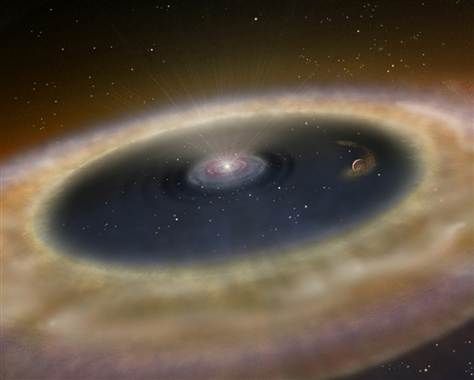
© NASA/JPL/Cal-TechA nearby star system is currently going through hell, as hinted at by NASA's Spitzer Space Telescope. Through its infrared eye, Spitzer has detected the dusty remains of comet impacts around the star Eta Corvi -- reminding us what it must have been like during the early evolution of our own solar system.
During our solar system's "Late Heavy Bombardment" (LHB) some four billion years ago, the inner planets were constantly peppered with massive comets impacting their surfaces. Earth would have been unrecognizable -- the planet's surface was a burning, molten mess; young atmosphere constantly punctuated by incoming cometary fragments.
Devoid of any eroding atmosphere, the moon's surface bears the scars of this epic cometary onslaught -- huge impact craters providing a reminder of how violent the "early years" of our solar system really was.
Despite the continuous cycle of cataclysmic impact events generating a hellish cauldron on Earth, the LHB has been linked with the genesis of life -- evidence points to a cometary source for the organic ingredients. Needless to say, the growing pains inflicted by the LHB on our planet is of huge importance to scientists.
Therefore, to spot the signs of similar cometary bombardments in other star systems would be pretty awesome. Not only would that help us understand the evolution of planetary systems orbiting other stars, it would provide a "time capsule" for us to have a glimpse of the early life of our own solar system. Of course, it would also give us an idea of how many other stars could be "ripe" for life (as we know it).
Now, scientists using observations by Spitzer
have detected cometary Armageddon around Eta Corvi, a star some 50 light-years away in the constellation Corvus.












